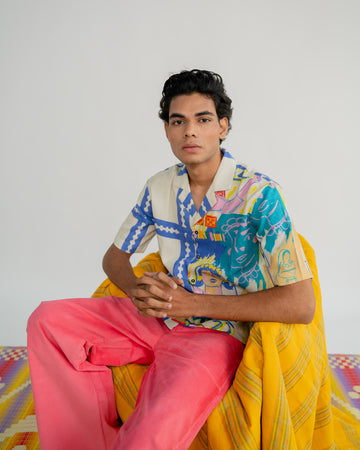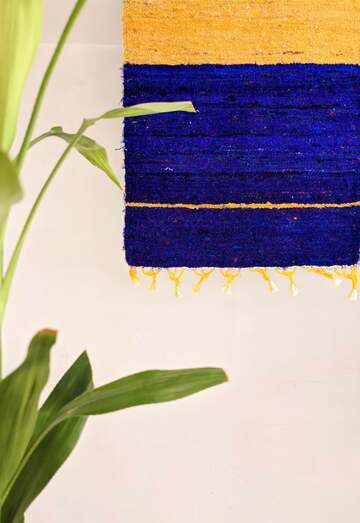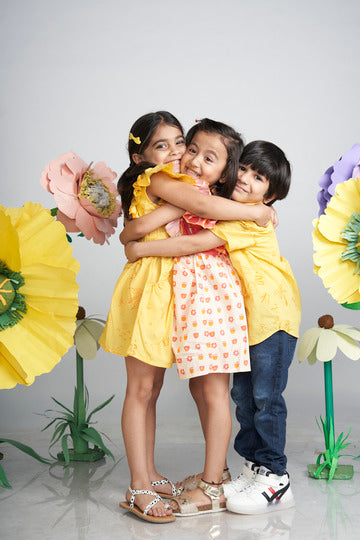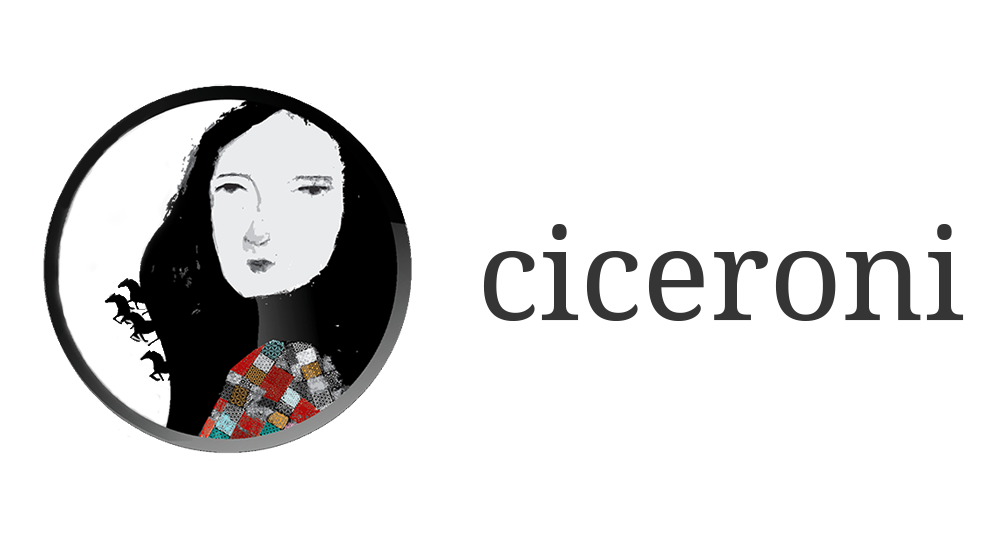Someone once phrased “When you support handmade, you are not just supporting a person, small business, family or our economy; You are purchasing a small part of an artist’s heart.”
Being one of the oldest and the largest industries of the country, India’s heritage handlooms represent the timeless traditions, diverse cultures and unparalleled craftsmanship that have stood the test of time. From fabrics and weaving techniques to embellishment and embroideries, India’s handloom industry is commended across the world for its originality and know-how. Known to find its origin during the Indus valley civilization, India’s handlooms were appreciated and loved by the historians – Megasthenes, Herodotus and Marco Polo. The advent of Mughal rule opened doors to the regal Chanderi, Banarasi Brocades, Mul Mul and a lot more. The British rule colonialization and onset of Industrial revolution set the ball rolling for the Swadeshi Movement led by Mahatma Gandhi in order to revive once thriving handloom sector.
After precisely 116 years, since the National Handloom Day was first celebrated on 7th August 1905, the fate of the Indian handlooms still dwindles. The FICCI FLO, Ahmedabad chapter on 6th August 2021 hosted Textile and Handicraft Conclave where the textile industry experts and craft connoisseurs evaluated the strategies required to preserve and revitalize the weaves and crafts of Gujarat. 2020 will always be remembered for the sufferings, the revival, the change and retrospection. For fashion industry to be specific, the pandemic on one hand opened doors to the techno digital world and on the other it brought in hunger and loss of livelihood to the creators of the magical weaves. UNEMPLOYMENT, NO INCOME, NO WORK and NO SUPPORT have been some of the keywords that defined the pandemic year for the handloom industry.
PANDEMIC HURDLES 2020
India’s handloom sector is the second largest employment generating sector in the country. The crisis caused by the pandemic resulted in the sudden disruption of businesses across the globe and the Indian economy lacked the immune system. The handloom sector along with the others was severely affected with their traditional and contemporary markets for artisans totally closed. Reminiscing the fate of the Indian weavers and craftsmen, Asif Shaikh, Master Embroiderer lamented “I cannot really say if the condition of the Indian craftsmen has improved with the pandemic having the country at a standstill. On the personal front, while the weavers suffered crisis, I chose to support them with work. It was a disheartening moment for me to watch national awardee weavers in Banaras sign up for low labour work as no one gave them work. While some of them struggled to have food on their plate, the others switched to power loom due to the demand for low-cost fabrics. The world is running after brands, but what about the creators? If the government and its people feel that handloom industry generates employment, why are our artisans and craftsmen suffering poverty and losing livelihood?”




Translating her thoughts filled with struggles in the year gone by, Zakiya Adil Khatri, a Bandhani artisan from Kutch and a graduate from Somaiya Kala Vidya, Gujarat shared “It was a difficult year for us. Our sales were impacted heavily as we relied majorly on exhibitions. Before the pandemic, we had foreign nationals and Indian nationals from different states shopping gifts and wedding trousseau essentials. After the travel restrictions, whatever income we received through that medium came to a dead end. The companies that hired us to create their collections stopped giving us orders as they had unsold bulk inventory. We were left with no option but to understand the functioning of digital space to market our products.”
This is just one story of a well-educated artisan; we are certain there are many more where artisans do not have access to technology. Do the lives of the weavers look dreamy as their creations? Would it be true to remark that if the handloom industry does not leverage on technology and digital platforms, the fortunes of the weavers will only worsen?
Putting down his thoughts looking at a fresh ray of hope through digital media, Prem Koli, a Chanderi artisan from Chanderi and a graduate from Women Weave’s The Handloom School, MP shared “Being a student of The Handloom School, it was a great experience to understand the marketing and social media aspects of selling handlooms. Yes, the sales did have a huge impact but I got a chance to try my hands on digital media. I created an Instagram and Facebook account during the pandemic and slowly began adding my collections. Within few months, with media know-how and market research, I started learning about the trending colours, motifs and designs. I have had instances where some of my clients come with reference image of a Chanderi saree made by a luxury Indian brand or the one they have seen a celebrity endorsing. I do not believe in copying a design. Each ensemble is unique because I believe ‘if the craft is original why not the result too?”
There is an emerging group of artisans and craftsmen across India who are embracing digital technology and marrying their knowledge of crafts with fashion demands thereby turning into craft entrepreneurs rather than just an artisan. The power structure is shifting, from designers back to the creators.
YEAR OF REVIVAL- 2021
While most think that social media is intimidating, it turns out that it did bring in the spells of hope on the weavers and craftsmen. Manini Sutaria Shah, Director – Ochre Revival and an advertising professional who does branding for sustainable fashion brands laid down her thoughts on how the handloom industry was impacted during the pandemic year. “With social media platforms gaining speed, the digital world has created a space for the handloom sector and handlooms now have a so called ‘status’ symbol. Weavers passing out of different handloom schools are now having an access to their clientele without having to rely on brands and designers to have their creations reach out to the public. Has its perception changed, yes! Handlooms are starting to slowly regain their importance as more and more influencers, celebrities like Vidya Balan, Rasika Duggal and also Ivanka Trump along with bloggers are styling the handlooms so well. It has gained a new space in the minds of the people who felt handlooms were not trendy. Will it be around for another lifetime or gain more popularity is still to be seen since the digital medium is fickle while the craft is genuine and lasting”, she comments.
But do GenZ and Millennials perceive handloom as “Cool”? They have put down their hearts on the trendy outfits by H&M, Zara and Forever 21 that will soon have its fate hanging by a thread when a new trend pops up. These clothes have a tremendous impact on the landfills and thereby environment. Conversations around sustainability, minimalism and mindful consumptions aren’t new to the world. But how much are these conversations making an impact.
Arshia Bhargava, Co-Founder of Rias Jaipur (a clothing label that contemporizes Indian handlooms to create ensembles with colourful and millennial silhouettes) stressing on the need to embrace handlooms and sustainable textile articulated “As patrons of Khadi, when Rias was in its inceptions, we had decided that while we understand what the younger generation is scouting for, we needed our creations to speak more about what they stood for – the revival of Khadi. There have been instances where we have had consumers questioning our prices while commenting on the by-large spoken prices of Khadi. The question to ponder here is – Are the consumers aware of what they are buying? Shopping from high-end fashion brand may label one as trendy but is that what we aim for, is a million dollar question. Bought out of want and a blind love for trends, these clothes will destroy our environment.” Elaborating the thought further, she said “Shopping 3-4 times from high-end brand equals to one sustainably made outfit. If the consumers adapt themselves to buying apparels that are consciously made rather than opting for use and throw mindset, there can be a huge change. Sustainable fashion and handlooms are going to define fashion industry’s future. They, unlike today, will not be termed as ‘want’ but looked upon as ‘need’ one cannot close their eyes to.”








FUTURE OF HANDLOOMS
Right from fashion’s boom through digital media to the artisans having an access to the online segments, there were countless changes one witnessed in the last 1.5 years of pandemic. As Arshia rightly stated that ‘sustainable fashion will be fashion’s future’ the same way, does digital hold the key to handloom industry’s future?
The experts in the industry forecast this trend and have endorsed it. From holding campaigns like ‘shop to save lives’ to support the weavers during the crisis to promoting Khadi consciously for years, Shalini Sheth Amin, Founder and CEO Moral Fibre, Ahmedabad gave her insights on the future of the handloom industry as she spoke, “If you ask me, I think the world is changing, slowly yet but it is changing. The pandemic has taught people the importance of being mindful and conscious about their consumption choices. They are well aware of where they are putting their money into. As far as India’s handlooms are concerned, I feel that the industry will pick up through digital media as it’s educating the masses to a major extent and hence people are starting to shop crafts often. On the other hand, the weavers have become more independent and are up for constant innovations to keep up with the changing times. I am optimistic that these changes are long lasting. They are the catalysts for change, revival and upgradation.”









